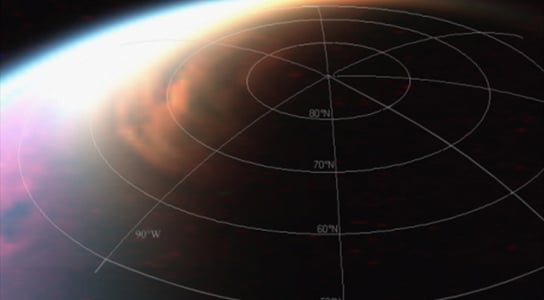
Saturn’s largest moon Titan north pole.
As one of the coldest places in the solar system, Titan, Saturn’s largest moon, is also one of the most dynamic. A new collection of 13 studies about Titan reveal previously undetected craters, rivers, and have provided maps of its surface and interior.
The studies have also revealed new details about the moon’s eerie 29.5-Earth-year-long seasonal cycle.
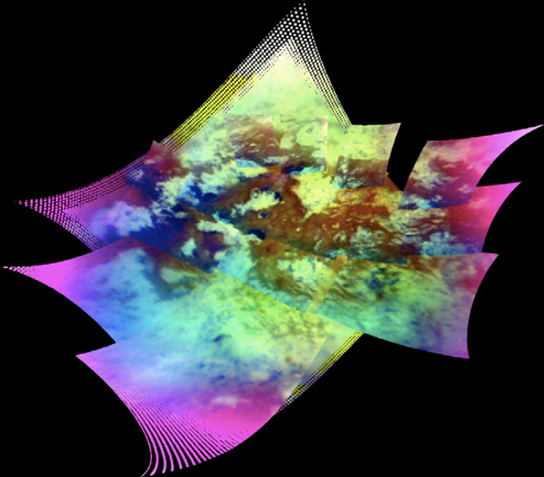
The findings come from 8 years of observations by NASA’s Cassini spacecraft in the Saturn system. Ralph Lorenz, from John Hopkins University’s Applied Physics Laboratory, co-authored the new studies published in the journal Planetary and Space Science.
Cassini’s tour of Saturn began in July 2004 and showcased the hazy clouds made up of ethane and methane that shrouded Titan’s lake-covered north pole. In 2009, the haze layer dropped, which allowed astronomers to use Cassini’s optical and infrared instruments to probe the moon.
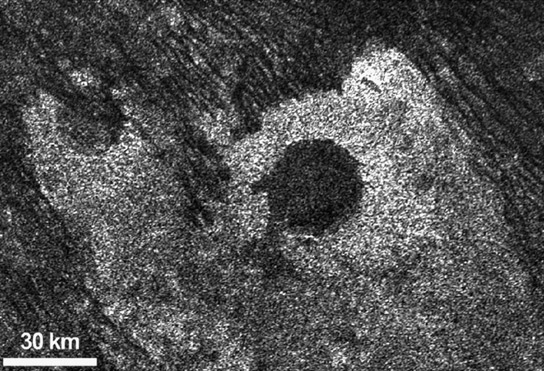
The dynamic atmospheric veil has allowed Cassini to partially map Titan, which is marked by craters left by asteroids, comets, and meteorites. Planetary scientists have identified a strange, ring-shaped feature called Paxsi on August 25th, 2009. It wasn’t until 2012 that it was confirmed that this was a 75-mile-wide impact crater.
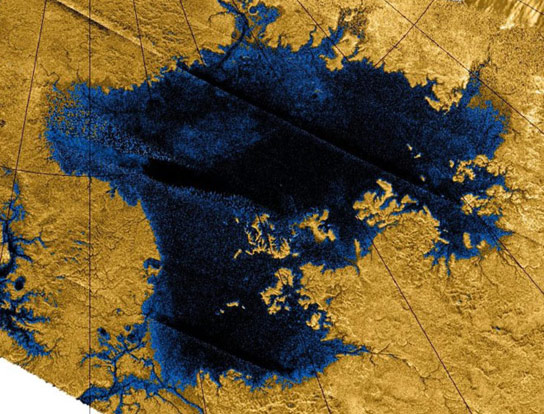
Other craters on Titan are between 1 billion and 200 hundred million years old. This indicates that the surface of Titan is relatively young. The surface is studded with lakes and rivers in which liquid hydrocarbons flow. Ethane and methane are found in gaseous form on Earth but on Titan, where surface temperatures hover at around -291˚F (93.7˚K), the compounds coalesce into liquids.
Lorenz hopes to launch a nuclear-powered robotic boat in 2016 called the Titan Mare Explorer (TiME) into the Sea of Ligeia.
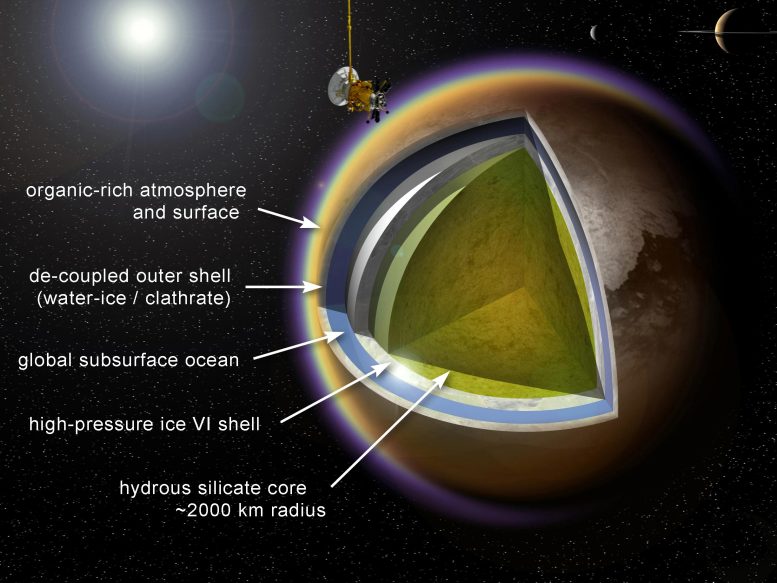
This artist’s concept shows a possible model of Titan’s internal structure that incorporates data from NASA’s Cassini spacecraft. In this model, Titan is fully differentiated, which means the denser core of the moon has separated from its outer parts. This model proposes a core consisting entirely of water-bearing rocks and a subsurface ocean of liquid water. The mantle, in this image, is made of icy layers, one that is a layer of high-pressure ice closer to the core and an outer ice shell on top of the sub-surface ocean. Credit: A. D. Fortes/UCL/STFC
Titan’s atmosphere is twice as thick as the Earth’s, making it difficult for astronomical instruments to image its surface in the visible light spectrum. Researchers had to combine several image data sets to get the most accurate map of Titan yet.
Doppler tracking has allowed them to measure Titan’s gravitational field, which has given the researchers an idea of the internal composition of Titan. The layers include a water-ice crust, subsurface ocean, a shell of high pressure, and a rocky interior.
References:
“Titan through time: Formation, evolution and fate” by Conor A. Nixon and Ralph D. Lorenz, 19 December 2011, Planetary and Space Science.
DOI: 10.1016/j.pss.2011.12.012
Titan Through Time: A Workshop on Titan’s Formation, Evolution and Fate





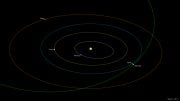



Wow, I wonder if we will ever be able to go visit this place. Also wonder if google is planning on “mapping” all the planets next? You KNOW they are thinking it.
that would be awesome
MY GOD…………………WE’RE SO TINY ! AND THERE’S SO MUCH TO LEARN !
thank you for ALL the information regarding SPACE /SATURN AND HIS MOONS AND EVERY THING AROUND IN OUR TINY SOLAR SYSTEM? AWSOME